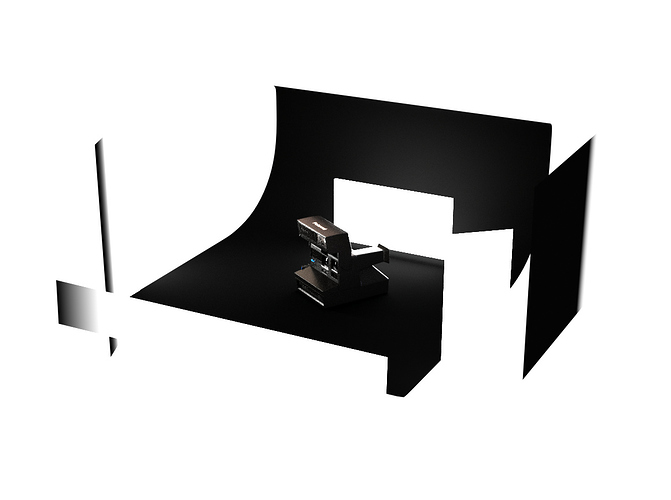Amazing render, I love the lighting cause it is different from the standard boring studio pictures. Your lightning setup brings dynamic and life to the picture, well done.
Fantastic work! I like the tiny textural details.
What was your lighting setup?
@Yusuf Raja: Hahah, you got me! Thank you! ![]()
@rotocyte: Thanks! I really didn’t expect it.
@Thiago_Bulhões:Thank you!
@sundialsvc4: Thank you for the feedback. I tried to make a realistic studio environment, but ended up just trying different things and found that this worked well. Do you have some book suggestions? I would really like to learn more about it.
And thank you for the tips. I have never really thought about using tinted lights before.
@Xraygunner: Hahah. xD Thanks!
@Luftaum: Thank you! I’m glad you like the lighting.
@andrewprice: Thanks! I used a bright hdri of a bathroom - or something like that - to get some realistic reflections and softbox-like light. However the blue-tinted light from the hdri on the right side of the camera was a bit too strong so I put in a dark plane with a gradient map on it to darken it a bit.
Brilliant!
Very good!!!
Btw … there is some tutorial on how to use Substance Painter with Blender? AFAIK there is NO direct material export from SP to Blender or am I mistaken?
Sincerely, JayMThanks Stego!
Thank you janmatys. You are completely right. As far as I know there is no direct material export from Substance Painter yet.
If you are following the PBR Metallic workflow (an alternative workflow is called the Specular workflow, you can check that out as well if you want to) you just have to export three textures (plus bump and normal textures if you want those too) from Substance Painter. Color texture, Metallic texture and Roughness texture and you are good to go. In the node editer you have to set up a PBR material with both a dielectric and a metallic shader - Cynicat Pro has a great tutorial on this. The metallic texture is used to mix between a metallic shader and a dielectric shader. The color texture is plugged into the color input of the metallic shader and the dielectric shader. The roughness is just plugged into all roughness inputs.
Hope it makes sense…
Cynicat Pro: https://www.youtube.com/watch?v=rImvyRepx1U
Looks good, thanks for sharing!
I love the feel of this one, but you should have wiped clean the lens before photographing this. Wait…
Awesome, awesome awesome awesome awesome awesome awesome
Love this picture. Very well done overall, but this stands out!
@Kemmler: Hahah, thank you! Well, that’s what happens when you forget to clean your ‘digital’ camera.
@TT2: Thanks! Glad you like it.
I like it! Are you going to make a modern camera too in the future?

